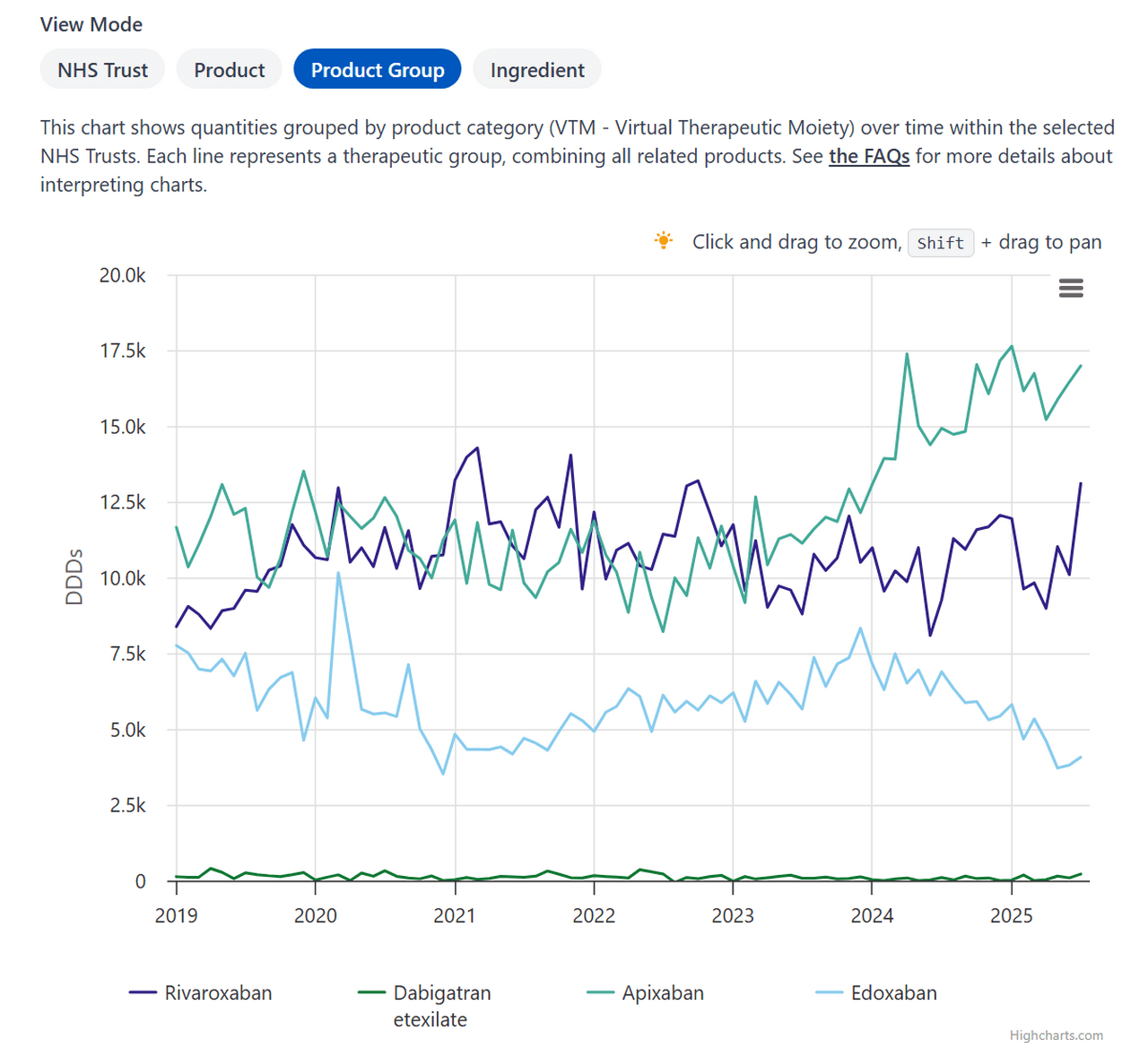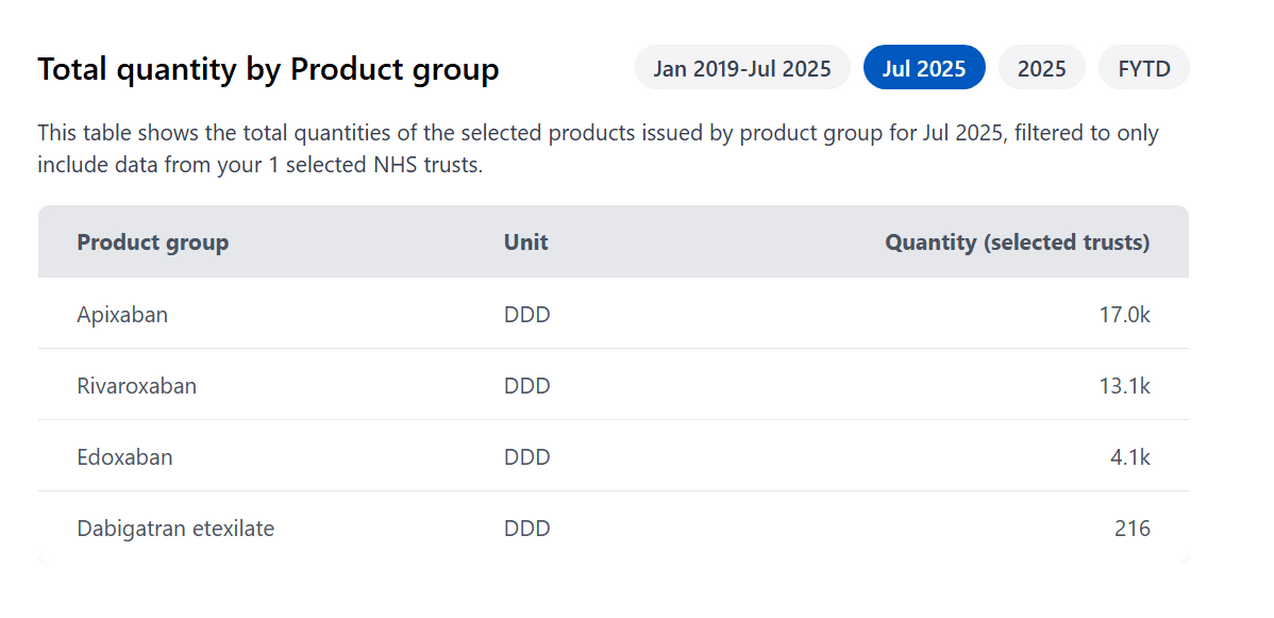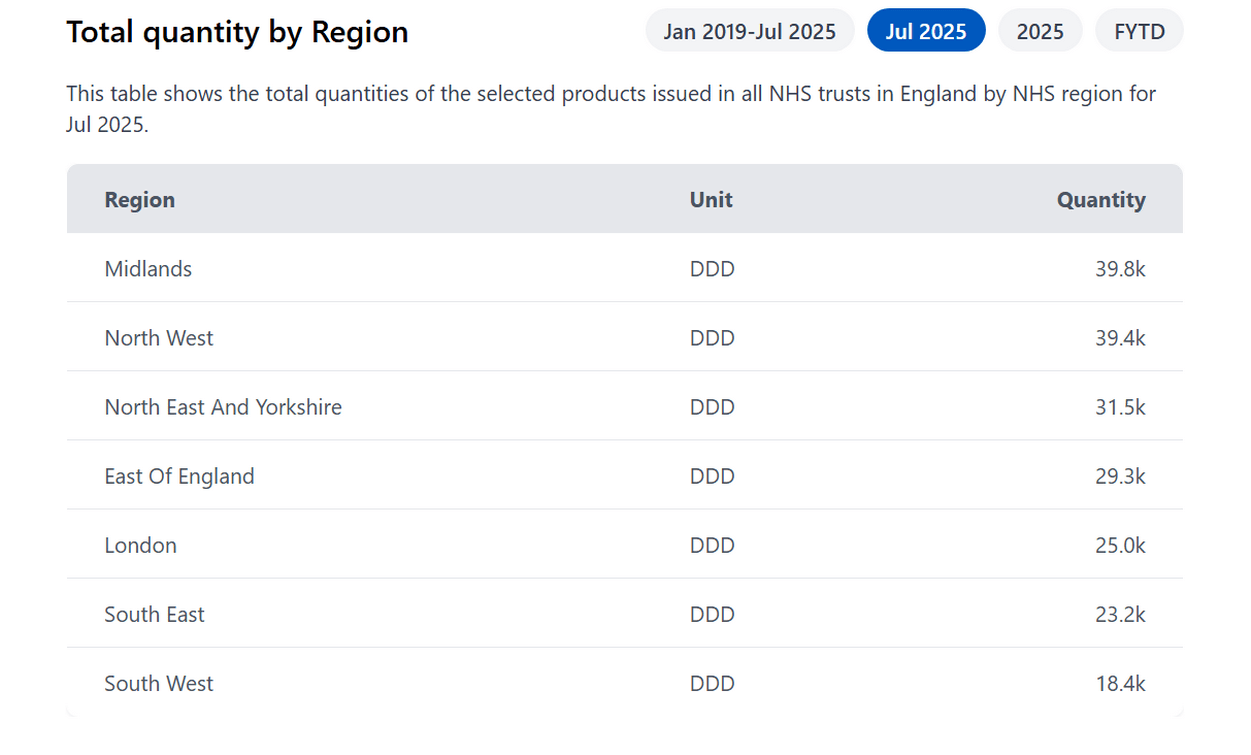Measuring anticoagulant use in secondary care using OpenPrescribing Hospitals: Part 2
- Posted:
- Written by:
- Categories:

This article is part of a series: Anticoagulant Use in NHS Hospitals in England
- Measuring anticoagulant use in secondary care using OpenPrescribing Hospitals: Part 1
- Measuring anticoagulant use in secondary care using OpenPrescribing Hospitals: Part 2
- Measuring anticoagulant use in secondary care using OpenPrescribing Hospitals: Part 3
In this 3 part blog series, Vicky Speed, clinical informatician at the Bennett Institute and specialist anticoagulation pharmacist at King’s College Hospital in London describes how OpenPrescribing Hospitals can be used to look at anticoagulant use in hospital trusts in England.
The blogs will describe analyses possible using OpenPrescribing Hospitals and tips for using the platform for:
- Low molecular weight heparin (LMWH)
- Direct oral anticoagulants
- Vitamin K antagonists
Part 2 - Direct oral anticoagulants on OpenPrescribing Hospitals
Did you know? 88% of DOACs in secondary care were issued as apixaban or rivaroxaban. 64% of DOACs issued were apixaban. (OpenPrescribing Hospitals - July 2025 using defined daily doses)
What are direct oral anticoagulants?
Direct oral anticoagulants (DOACs) are a group of blood thinning medications. They are most commonly used for the prevention of stroke when patients have atrial fibrillation or for the treatment and prevention of blood clots. They are frequently prescribed in primary and secondary care.
Best value DOACs
In September 2024 the NHS in England released updated commissioning recommendations for DOACs, which state:
For patients commencing treatment for atrial fibrillation (AF): subject to the criteria specified in the relevant NICE technology appraisal guidance, clinicians should use the best value DOAC that is clinically appropriate for the patient. Apixaban and rivaroxaban (prescribed generically) are currently the joint best value DOACs.
We have built a measure (a pre-built analysis) to allow NHS hospital trusts to see how they compare with others at issuing the currently best value DOACs, apixaban and rivaroxaban. It can also be broken down by ICB, region and nationally.
The measure shows the proportion of DOACs issued in secondary care organisations that are not apixaban and rivaroxaban tablets. The red line shows the median trust-level % of all DOACs issued as apixaban and rivaroxaban. In this measure, the lower the better. The lower the line for your organisation the lower the proportion of dabigatran and edoxaban, or the more expensive non-tablet formulations of apixaban and rivaroxaban, are being issued!

On this chart, we have overlaid two large NHS trusts. The dark blue is King’s College Hospital NHS Foundation Trust and the light blue is Manchester University NHS Foundation Trust. Both are close to the median, from September 2024. The platform enables you to quickly see how you compare with similar organisations.
We’ve written more about measures and why we choose to show variation using percentiles charts on our blog.
What does the picture look like nationally?
Nationally, in September 2024, 15.8% of DOACs issued from NHS hospital trusts were not apixaban and rivaroxaban tablets. This decreased to 13.0% in July 2025.

Custom analysis of DOAC use within an NHS hospital trust
The DOAC measure described above provides a single pre-made analysis based on NHS England updated commissioning recommendations for DOACs. Locally, it might be useful to keep track of how much of each DOAC is being issued. You can look at this by running a custom analysis on OpenPrescribing Hospitals. Below are the results from this analysis we’ve predefined, analysing DOAC usage at a single NHS hospital trust.


This breakdown helps to understand which DOACs are being used the most and, thinking about the NHS England best value recommendations, the extent of edoxaban/dabigatran prescribing. (*DDDs cannot be calculated for the rivaroxaban initiation pack so they are not included in these counts. We’ve written a blog about how we use DDDs in OpenPrescribing Hospitals)
You might also be interested to see the uptake of individual less frequently used DOAC products such as dabigatran 75mg or edoxaban 15mg.
Tip - Use the summary tables to get the actual numbers.
Based on user feedback, we have developed summary tables to be shown together with charts. To get the number issued, run your analyses, then scroll down to the bottom of the page. The numbers reported can be selected to suit your needs. This might be a breakdown of individual agents (apixaban, rivaroxaban, edoxaban or dabigatran), product strength, or you might want to look at breakdowns by ICB, region, or nationally.
To change the ‘breakdown’ in the chart AND the table, just change the view mode which can be found above the chart.
For example: In the chart and table below, you can see the use of edoxaban broken down by NHS region.


In the next blog, we will show how OpenPrescribing Hospitals can be used to look at vitamin K antagonist usage. If you have any suggestions / comments / feedback for the platform OpenPrescribing Hospitals please get in touch at bennett@phc.ox.ac.uk.


